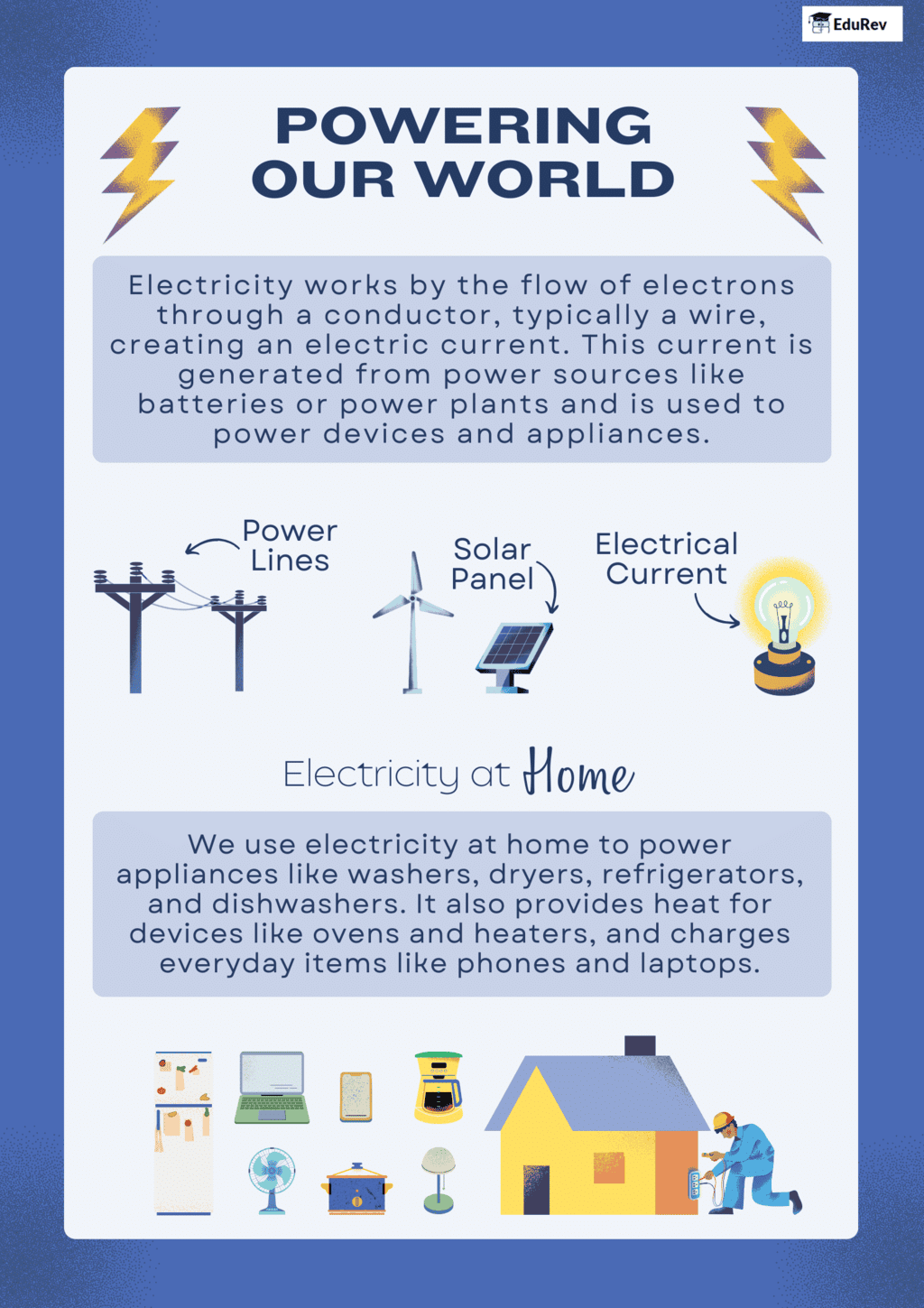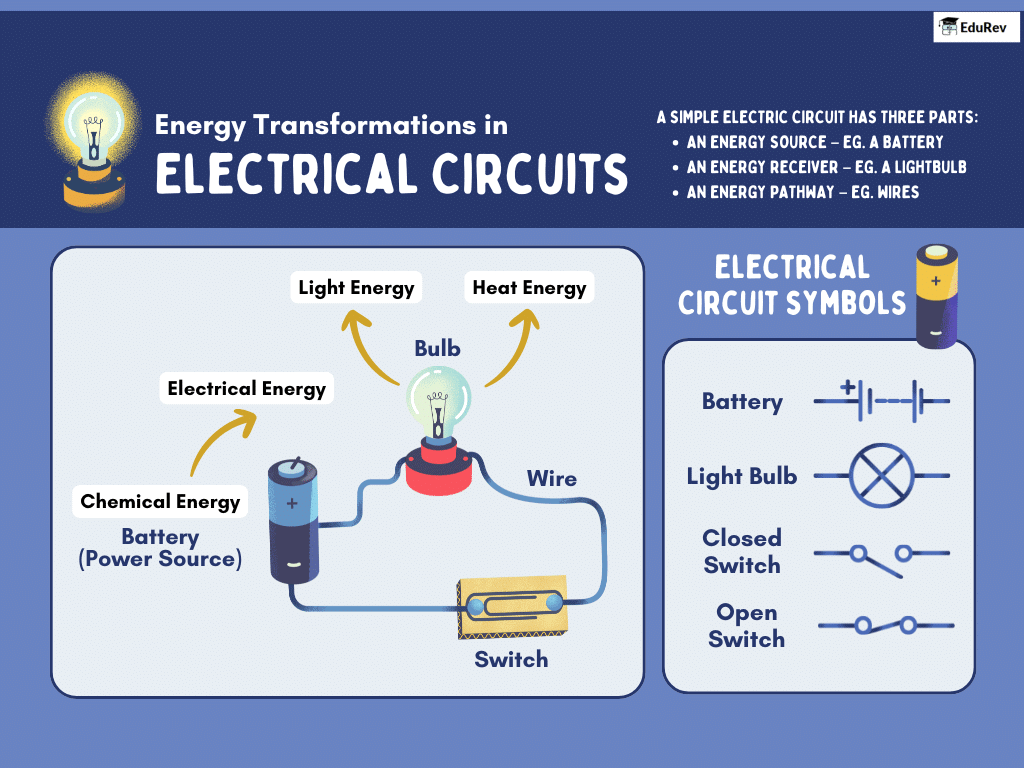Class 7 Exam > Class 7 Notes > Science Class 7 (Old NCERT) > Infographics: Electric Current and Its effects
Class 7 Science Chapter 3 Infographics - Electricity: Circuits and their Components


The document Class 7 Science Chapter 3 Infographics - Electricity: Circuits and their Components is a part of the Class 7 Course Science Class 7 (Old NCERT).
All you need of Class 7 at this link: Class 7
|
111 videos|286 docs|28 tests
|
FAQs on Class 7 Science Chapter 3 Infographics - Electricity: Circuits and their Components
| 1. What is electric current and how is it measured? |  |
Ans. Electric current is the flow of electric charge, typically measured in amperes (A). It represents the movement of electrons through a conductor, such as a wire. The measurement can be taken using an ammeter, which is connected in series with the circuit to measure the flow of current.
| 2. What are the effects of electric current on the human body? |  |
Ans. Electric current can have several effects on the human body, ranging from mild sensations to severe injuries or even death. Low levels of current may cause tingling or a shock sensation, while higher currents can lead to burns, muscle contractions, or cardiac arrest. The severity of the effect depends on the current's intensity, duration, and the path it takes through the body.
| 3. How does electric current generate heat? |  |
Ans. Electric current generates heat through a process known as Joule heating or resistive heating. When current passes through a conductor, it encounters resistance, leading to energy loss in the form of heat. This principle is utilized in devices like electric heaters and toasters, where the heat produced is used for various applications.
| 4. What are the different types of electric current? |  |
Ans. There are two main types of electric current: direct current (DC) and alternating current (AC). DC flows in one direction and is commonly used in batteries and electronic devices, while AC changes direction periodically and is typically used for power distribution in homes and industries.
| 5. What safety measures should be taken when working with electric current? |  |
Ans. When working with electric current, it is essential to follow safety measures such as wearing insulated gloves, using tools with insulated handles, and ensuring that equipment is properly grounded. Additionally, always disconnect power sources before working on electrical devices and be aware of the potential hazards associated with electric shock and short circuits.
Related Searches






















